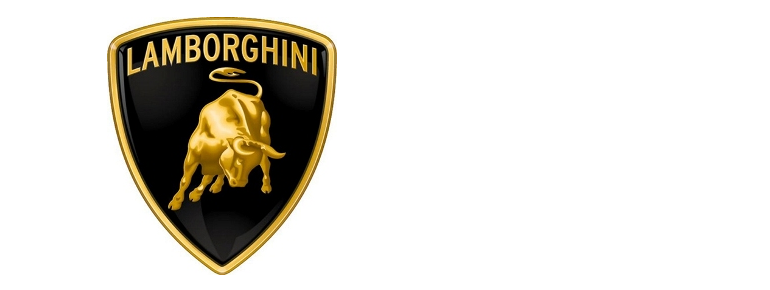


the Greater China market
For decades, the appeal of the Greater China market has drawn the attention of foreign firms. The vast size and substantial wealth of the Chinese-speaking world present enticing opportunities for Western companies. To make inroads into the expansive Chinese markets, numerous foreign firms have strategically invested in local branding efforts. Through meticulous branding initiatives, these companies have successfully established a presence that spans various regions within the Chinese-speaking world, tapping into the immense potential of this dynamic market. Explore how car brand names play a crucial role in navigating and thriving within the unique landscape of the Greater China market.
Yet many of the same firms also came to realize that the Chinese-speaking market is not a singular monolith. Not only are there many political boundaries among the mainland, Hong Kong, Macau, and Taiwan, there are numerous cultural differences and various levels of economic development shaped by the diverging heritages of and sometimes the political policies enacted in the different localities.
Such differences forced numerous foreign firms to deliberately distinguish their strategies in the different Chinese-speaking localities. For the duration of this article, the focus will be on the different brand names used by foreign firms in the mainland Chinese and Hong Kong markets. A small scale research, conducted by the LABReport team, revealed the pervasiveness of such brand-locality inconsistency. Of the 5 top automobile manufacturers in the world, 4 of them have at least one brand name with different translation in Hong Kong and mainland China. Research showed similarly high percentages among top manufacturers in cosmetic and athletic products.
The reasons for foreign firms to intentionally differentiate Chinese brand names in mainland China and Hong Kong can be classified into three distinct and well-established reasons:
1. The different brand names reflect the difference between a strong affinity toward classical Chinese tradition in Hong Kong and a markedly pro-Western attitude in mainland China.
2. The different brand names consider the pronunciation difference in commonly used Mandarin dialect in mainland China and Cantonese dialect in Hong Kong.
3. The different brand names present a well-considered product differentiation strategy by the firms, maximizing profit in each market by targeting different consumer groups in mainland China and Hong Kong.
Different localities have different cultural attributes. Understanding of the subtle differences needs to be reflected in separate branding. This is certainly the case between Hong Kong and mainland China, where different political economic backgrounds have led to divergence of what is considered attractive in the local cultures.
The traditional mindset of the Hong Kong resident has been conveyed through branding of many foreign products. Japanese car brand Lexus is marketed as 凌志. 凌 means “surpassing” and 志means “ambition” in classical Chinese . A poetic phrase “surpassing ambition,” sourced from classical literature , gives Lexus an attribute of graceful connotation deep-rooted in Chinese tradition.

LEXUS
Yet, in Mainland China, the grand, the powerful, and the big have become symbols that can raise the perceived social status of their possessors, while tradition is sometimes looked upon as backward. Car brand names must conspicuously cry out the exalted greatness of the product. If this can not be achieved during translation, a literally meaningless but completely foreign-sounding brand name is preferred on the mainland. For Lexus, the mainland brand name is 雷克萨斯. The Hong Kong brand name cannot immediately bestow grandeur upon the product’s user, thus the foreign-sounding name is kept.
Also, 凌志 is used as a registered trademark for several small Chinese companies in the field of office products, lighting, and chemical production. Thus, the legal problems with brand registration may have been a further obstacle for 凌志 to be the official brand name of Lexus in mainland China.
The affinity of the mainland Chinese with foreign names comes from a widely held belief that foreign products are more expensive and higher in quality, which is indirectly caused by the stereotypical association of “Made in China” and anything Chinese-sounding with low price and lower quality.
The sometimes vastly different pronunciation of same Chinese characters in Mandarin and Cantonese has strong influences on how foreign brand names are directly transliterated in the mainland and Hong Kong markets. Characters with strong resemblance to the original foreign name in one dialect have the tendency to become quite far fetched in the other dialect.
For example, in the Hong Kong market, Lamborghini, the luxury Italian automobile brand, is transliterated as 林保堅尼. Roughly pronounced as “lam-bou-gin-nei,” the four-character phrase, although having no literal meaning, has a strong phonetic proximity to the original Italian term.

LAMBORGHINI
However, the same four characters in Mandarin become “lín bǎo jiān ní”, losing much of the closeness in sound as the “lam” sound becomes “lin,” “bou” (similar to “bor”) becomes “bao,” and the “gin” sound for “ghin” becomes “jian.” The phonetic differences forced Lamborghini to adopt a new term for the mainland Chinese market: 兰博基尼. Pronounced “lán bó jī ní,” the term in Mandarin has a much stronger phonetic resemblance to the Italian name.
While the firm is sure to incur additional costs to maintain two brand names in two separate markets with extra efforts in production and marketing coordination, enabling the consumers in both markets to have a strong phonetic recognition for the original foreign brand name is a benefit that can easily offset the coordination costs.
The enormous size and combined wealth of the mainland market compared to those of Hong Kong gives way for much greater justification for investing in new brand names on the mainland, as the brand investments have much greater probability of yielding higher returns than the brand maintenance costs on the mainland than in Hong Kong.
Often, the firm needs to cater a product to audiences in different markets in order to generate the greatest potential profit for the firm in all markets. Targeting various consumers requires the product to be presented in different ways, giving it distinct characters and attributes to reflect the differing needs and wants of its targeted audiences.
The most direct way for the foreign firm to achieve such differentiation of the same product is by giving the product different brand names in the various markets in which it operates. Through research into market segmentation, the firm can approximate the relative size and wealth of each consumer group with their own preferences as determined by attitudes toward products and priorities in spending. By emphasizing different qualities of the product, the firm can appeal to the largest market segments with the greatest combined wealth while being suited for the purchase of the marketed product.
Marketing under different brand attributes in Hong Kong and mainland China have been used to great effects by many business-to-consumer multinationals through the use of almost completely mutually unrecognizable brand names. The economic differences between mainland China and Hong Kong is reflected by different consumer behaviors in the two markets.
According to a report by Hong Kong Trade and Development Commission (HKTDC), attitudes of typical consumers in mainland China and Hong Kong demonstrated evident difference especially when there were still vast economic disparities between the two regions. The report notes that most Hong Kong consumers had strong concerns for product image and design beyond the practicality of the product, while the majority of mainland Chinese were still mostly concerned about product’s functionality. As for now, a decent portion of Hong Kong consumers are still sensitive about if a product can reflect their social status, whereas consumer behaviors in mainland China, albeit experiencing dramatic changes, still regards quality as one of the key concerns, as reports by Santander indicate.

MAZDA
The automobile industry has been especially keen on such difference in attitude. Japanese car maker Mazda uses the name 马自达 in its mainland Chinese market. ‘马 mǎ’ means horse that has been used as a transportation tool since long ago, ‘自 zì’ means automatic, ‘达 dá’ means reach. ‘An automatic horse for you to reach everywhere’ is a strong demonstration of Mazda vehicles reliability and durability.
Mazda’s brand in Hong Kong, however, is 万事得. 万事, literally meaning “ten thousand matters,” connotes “all things,” while 得 means to capture or to gain. “Gaining all things” has no obvious associations with automobiles, but to the image-conscious Hong Kong consumers, the auspicious-sounding name does bring a strong feeling of optimism and class to the brand. Practicality vs. image is but one of many ways with which an identical product is differentiated in the two markets.
Despite the distinctions highlighted in brand-locality relationships, the prevailing trend among foreign firms targeting both mainland China and Hong Kong markets is to cultivate a unified brand image throughout the Chinese-speaking world. While the HKTDC notes the ongoing resistance to direct Cantonese translations in Hong Kong, the convergence of socio-economic and geographic factors suggests a diminishing need for separate brands over time. Nevertheless, as supply chains, culture, and language integration between Hong Kong and China progress, the strategic consideration of developing distinct car brand names for each market remains relevant for foreign companies. Explore how this approach aligns with the evolving dynamics of the automotive industry in both regions.
A Labbrand Group Company © 2005-2024 Labbrand All rights reserved
沪ICP备17001253号-3To improve your experience, we use cookies to provide social media features, offer you content that targets your particular interests, and analyse the performance of our advertising campaigns. By clicking on “Accept” you consent to all cookies. You also have the option to click “Reject” to limit the use of certain types of cookies. Please be aware that rejecting cookies may affect your website browsing experience and limit the use of some personalised features.